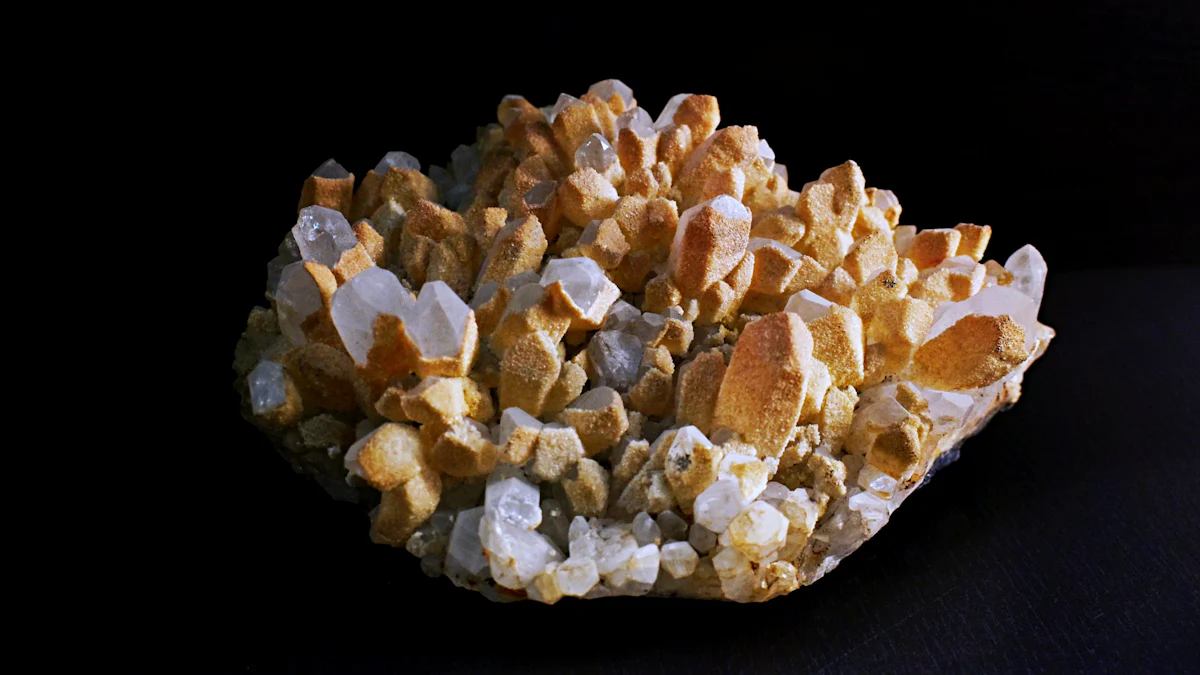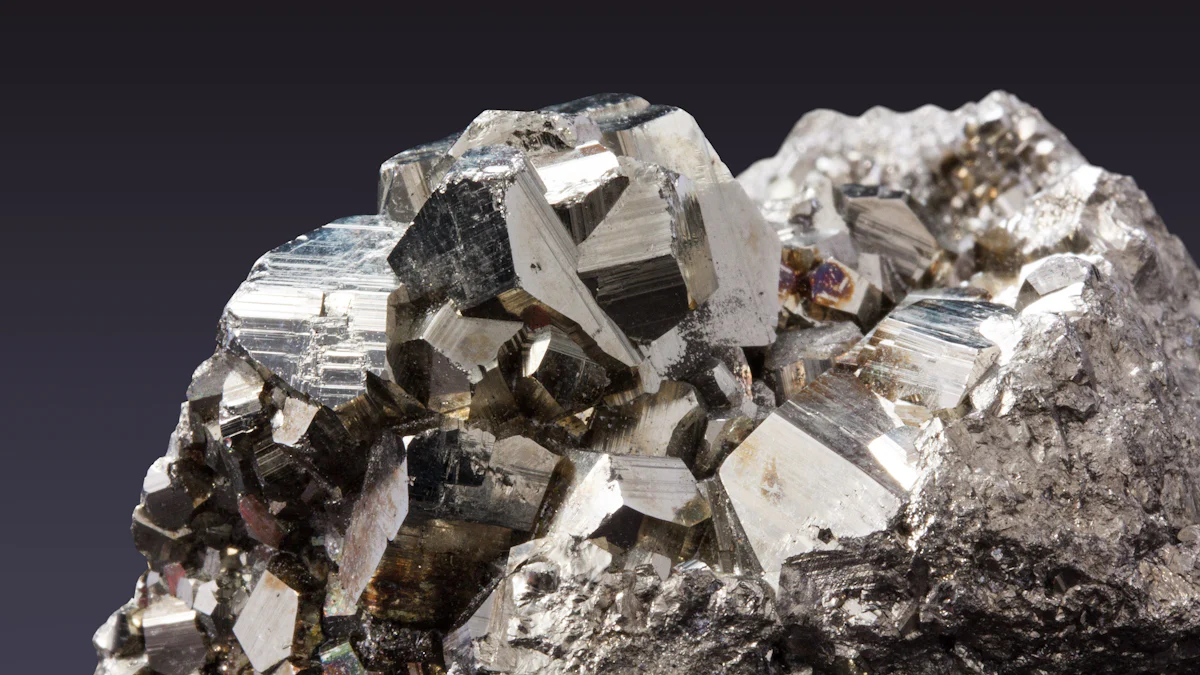What Makes Green Pyromorphite a Unique Treasure

The Guangxi Daoping Green Sphere-shaped Pyromorphite stands out with its vibrant colors and unique properties. Collectors highly value this green pyromorphite for its rich green hues, which range from bright leafy tones to deep forest shades. Its rarity adds to its allure, as it boasts a popularity rating of 2 and a demand rating of 1 on a scale of 1 to 4. The well-formed crystals and variety of forms available enhance its appeal. This mineral not only captivates with its beauty but also connects you to nature, promoting emotional healing and personal growth.
Key Takeaways
Green pyromorphite has bright green colors. These colors range from light green to dark green. This makes it popular with collectors.
This mineral has a special hexagonal shape. It is soft, with a hardness of 3.5 to 4.0 on the Mohs scale.
Green pyromorphite mostly comes from Guangxi, China. It forms in oxidized lead ore deposits. This makes it rare and desirable.
Collectors like bright colors, nice crystals, and unique surfaces. These features affect how much the mineral costs.
Buying green pyromorphite can be a good idea. It is useful for environmental projects and people are interested in its special qualities.
Unique Characteristics of Green Pyromorphite

Color and Luster
Green pyromorphite captivates with its vibrant shades of green. You can find colors ranging from bright, leafy tones to deep, forest hues. This mineral often displays a resinous to vitreous luster, which enhances its visual appeal. Compared to similar minerals, green pyromorphite stands out. For instance, mimetite appears yellower, while vanadinite showcases redder tones. The bright green color of pyromorphite makes it a favorite among collectors.
Crystal Structure
The crystal structure of green pyromorphite is hexagonal. This unique arrangement contributes to its distinct properties. Here’s a quick overview of its crystal characteristics:
Property | Description |
|---|---|
Crystal System | Hexagonal |
Composition | Pb5(PO4)3Cl (lead chlorophosphate) |
Common Forms | Prismatic, barrel-shaped, botryoidal, and fibrous forms |
Color | Typically light green, but can also be white, brown, orange, yellow, colorless |
Vibrational Energy | High vibrational stone linked to emotional healing and personal strength |
The hexagonal structure not only influences its appearance but also affects its hardness, which ranges from 3.5 to 4.0 on the Mohs scale. This makes green pyromorphite relatively soft compared to other minerals.
Surface Features
When you examine green pyromorphite closely, you’ll notice its intriguing surface features. The mineral often exhibits a white streak, which adds to its uniqueness. The texture can vary, with some specimens showcasing smooth surfaces while others display a more rugged appearance. These surface characteristics contribute to the overall charm of green pyromorphite, making it a delightful addition to any collection.
Geological Origin of Green Pyromorphite
Location in Guangxi
Green pyromorphite primarily forms in the Guangxi region of China, particularly at the famous Daoping Mine in Guilin. This area is known for its rich deposits of lead ore. The unique geological conditions here create an ideal environment for the formation of this stunning mineral. You can find green pyromorphite in oxidized zones of lead ore deposits, where it thrives in the presence of specific minerals.
Formation Conditions
The formation of green pyromorphite requires several key conditions:
It develops in the oxidation zones of lead ore deposits.
These zones are near the surface, where primary lead minerals like galena are exposed to oxygen and water.
The oxidation process breaks down these primary minerals, leading to the creation of secondary minerals like pyromorphite.
Phosphate-rich solutions and chlorine are essential for its formation, providing necessary chemical components.
Conditions arise when groundwater interacts with phosphate-bearing rocks or organic material.
These factors contribute to the vibrant colors and unique characteristics of green pyromorphite. The mineral forms in environments rich in lead, phosphate, and chloride, influenced by weathering processes.
Historical Significance
The history of green pyromorphite is as fascinating as its formation. The name "pyromorphite" comes from Greek words meaning "fire" and "form," reflecting its crystallization process. German mineralogist Johann Friedrich Ludwig Hausmann named it in 1813, although Johan Gottschalk Wallerius first discovered it in 1748. Wallerius referred to it as "grön blyspat" (green lead spar) and "Minera plumbi viridis" (green lead mineral). The various names over the years highlight its diverse appearances and the evolving understanding of its properties by geologists.
Understanding the geological origins of green pyromorphite enhances your appreciation for this remarkable mineral. Its unique formation conditions and rich history make it a true treasure for collectors and enthusiasts alike.
Comparison with Other Pyromorphites
Regional Differences
When you explore pyromorphites from various regions, you notice distinct characteristics. For example, the following table highlights notable localities and their unique features:
Region | Notable Localities | Characteristics |
|---|---|---|
Europe | Germany (Harz Mountains, Saxony) | Fine specimens from Bad Ems and Friedrichssegen mines. |
France (Huelgoat, Pontgibaud, Les Farges mine) | High-quality specimens from Les Farges mine in Corrèze. | |
United Kingdom (Mendip Hills, Caldbeck Fells) | Notable crystals from old lead mining areas. | |
North America | United States (Idaho, Coeur d’Alene district) | Bright green pyromorphite crystals. |
Mexico (Chihuahua, Durango) | Found in several mining locations. | |
Asia | China (Guangxi, Yunnan provinces) | Large, well-formed crystals from recent mining activities. |
Australia | Broken Hill, New South Wales | Associated with other secondary lead minerals like cerussite and anglesite. |
Africa | Morocco (Mibladen mining district) | Crystals often found alongside vanadinite. |
Color Variations
Color plays a significant role in determining the value of pyromorphites. The most valuable specimens exhibit rich, saturated green or yellow-orange hues. In contrast, white hues appear more frequently in less oxidized areas. Green hues dominate in highly oxidized regions, such as those found in Guangxi. This variation in color not only affects aesthetic appeal but also influences market demand.
Rarity Factors
Several factors contribute to the rarity of green pyromorphite compared to other minerals. The following table summarizes these factors:
Factor | Description |
|---|---|
Provenance | Specimens from rare localities or with unusual characteristics command higher prices. |
Quality | High-quality specimens with vibrant color and excellent crystal form are valued more highly. |
Size and Aesthetics | Larger, well-formed, and visually striking specimens generally fetch higher prices. |
Market Demand | Fluctuations in market demand can influence prices, driven by trends and availability. |
Understanding these comparisons helps you appreciate the unique qualities of green pyromorphite. Its vibrant colors, regional characteristics, and rarity make it a standout choice for collectors.
Collectibility and Value of Green Pyromorphite

Market Demand
The demand for green pyromorphite has seen significant growth in recent years. This increase stems from various factors:
Its applications in environmental remediation and industrial processes.
A rising interest in sustainable practices, which boosts demand for this mineral.
Advancements in material sciences that open new business opportunities.
As you explore the market, you will notice that the focus on green technologies has led to innovative uses for green pyromorphite. This trend makes it an attractive option for both collectors and industries.
Collector Preferences
When it comes to acquiring green pyromorphite, collectors have specific preferences. The following table summarizes these factors:
Preference Factor | Description |
|---|---|
Color | Collectors prefer bright, vivid colors, especially greens, yellows, and oranges. |
Crystal Form | Well-formed, sharp hexagonal crystals are highly valued, with unique habits being particularly desirable. |
Luster | A vitreous to resinous luster enhances visual appeal, making specimens with high luster more valuable. |
Size | Larger specimens are typically more valuable, but small, well-formed crystals can also be prized. |
Association with Other Minerals | Specimens associated with minerals like galena or cerussite are interesting due to their geological context. |
These preferences highlight what collectors seek in their specimens. You can see that vibrant colors and unique forms significantly enhance the value of green pyromorphite.
Investment Potential
The investment potential of green pyromorphite looks promising. Here are some key points to consider:
Its applications in environmental sustainability are gaining attention.
Growing interest in its unique properties fuels demand in the collector's market.
Online platforms and international trade are expanding the collector's market, creating new revenue streams for suppliers.
Advancements in material sciences renew interest in pyromorphite's chemical properties, leading to potential applications in catalysis and high-tech ceramics.
The focus on green technologies fosters new applications for pyromorphite, especially in sustainable sectors.
These factors indicate that investing in green pyromorphite could yield positive returns. As you consider adding this mineral to your collection, keep in mind its growing significance in various fields.
Guangxi Green Pyromorphite is a unique treasure. Its vibrant green hues range from bright, leafy tones to deep, forest shades. The spherical formations resemble lush moss, adding to its charm. You will find that its crystalline structure enhances its luster, reflecting light beautifully. This mineral's rarity and appeal make it highly sought after by collectors. Understanding its uniqueness allows you to appreciate this remarkable mineral even more.
FAQ
What is Green Pyromorphite?
Green pyromorphite is a mineral composed of lead chlorophosphate. It features vibrant green colors and unique crystal formations. You often find it in oxidized lead ore deposits, particularly in Guangxi, China.
How do I care for my Green Pyromorphite?
To care for your green pyromorphite, keep it dry and avoid exposure to harsh chemicals. Clean it gently with a soft cloth. Store it in a cool, dry place away from direct sunlight to maintain its color and luster.
Is Green Pyromorphite safe to handle?
Yes, you can handle green pyromorphite safely. However, since it contains lead, wash your hands after handling it. Avoid ingesting any part of the mineral to ensure your safety.
How can I tell if my Green Pyromorphite is genuine?
To verify authenticity, examine the color, luster, and crystal structure. Genuine specimens display vibrant green hues and a hexagonal crystal system. You can also consult a mineral expert for further confirmation.
What are the uses of Green Pyromorphite?
Green pyromorphite has various applications, including environmental remediation and industrial processes. Its unique properties make it valuable in material sciences and sustainable practices, attracting interest from collectors and industries alike.